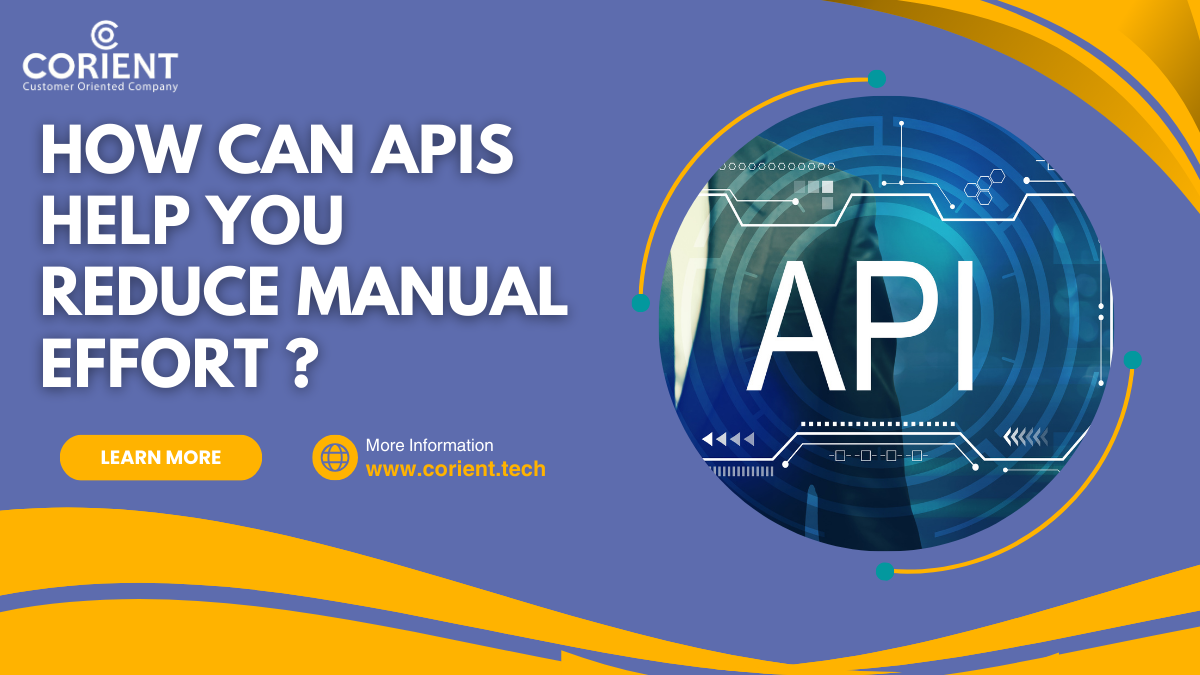Uber, Facebook, and PayPal- these are some familiar names in the modern world. However, several internet users are not aware that they have already used the Application Programming Interface. The term, API, is something confusing for consumers. But, lots of organizations have taken advantage of it to ensure automation. APIs help in providing the best customer experience and are effective in uncovering the new source of revenues. As it brings automation, you can save manual efforts.
The present world is highly competitive, and thus, it is important to consider automation for successful digital transformation. You need to automate multiple business processes. Although you can find several solutions for automation, they do have few drawbacks. That is why APIs have become one of the best alternatives for automation.
However, what is an Application Programming Interface?
An API refers to some protocols, routines, and tools designed to build applications. At the basic level, APIs are some technologies to let software applications communicate through them. You may also make APIs accessible to the public. API saves time by automating tasks, and users have to rely on a single interface.
APIs have become the standard followed by organizations to exchange data and create seamless experiences for consumers. It links business processes, content, data, and services to channel their partners and in-house teams securely.
How can APIs be beneficial?
- APIs helping you to reduce human errors and overheads
APIs can give you the opportunity to get value from agile innovation. You can easily adapt to different market changes. In fact, APIs work like data pipelines, useful for companies to automate basic activities and data entry processes. These companies lower overheads, increase productivity and strengthen business development efforts.
- Deliver integration and interoperability due to APIs
To automate your business processes, your corporate systems have to fill the functionality gaps. Custom codes are useful for filling the gaps. However, the major issue is that custom codes are not visible, and thus, your IT team cannot implement modifications when they need to adopt new tools. Although customizations are important, it is essential to focus on integrations.
To distinguish your business from other companies, you have to remove your present challenges with data automation, interoperability, and integration. You can find better client outcomes with this effort.
Some companies have found that they need a unique platform to manage their workflows. APIs are the most affordable solutions, as they streamline the integrations of multiple applications and software interoperability. Thus, APIs have become the major driver for competitive success and innovations.
- Improved collaboration
A standard enterprise relies on more than 500 applications, and some of them are disconnected. By using APIs, they can promote integrations. Apps and other platforms can interact with each other seamlessly. With the integration, organizations will be able to automate their daily workflows. There will be smooth workplace collaboration. In the absence of APIs, these businesses will have no connectivity. There will be informational problems and performance issues.
- Data monetization becomes easy
Several organizations offer free APIs in the beginning. The major intention of these companies is to build relationships with their business associates. But, when your API gives access to digital resources, you may monetize them.
For instance, AccuWeather released its self-service portal and sold different API packages. It has taken a number of months to attract lots of developers and sell 11,000 API keys.
- Ensure higher security with APIs
APIs develop an additional protection layer between the server and data. Developers will make the API security stronger with the use of signatures, tokens, and TLS encryption. The implementation of API gateways will let you authenticate and manage traffic.
Other ways in which APIs help you with business process automation.
- Different data entries can get into multiple systems without much effort.
- Maintenance of data in several systems needs time, and thus, you can avoid this problem with APIs.
- Automation ensures proper integration of different applications to avoid inconsistencies.
The most popular examples of APIs
Although automation is the most noticeable benefit of APIs, they are useful to maintain security. Check the most common examples of APIs.
- Comparisons for travel reservations- Travel booking platforms show details of different flights and the cheapest available options for several destinations. To provide this service, you have to implement APIs. Your users will be able to use the APIs to get the latest data on airlines and hotels. Due to the autonomous data exchange, APIs significantly save the effort and time needed to check flights and accommodation.
- Payment processing- You may have found some corporate websites that let you pay using PayPal. You can mostly notice it on eCommerce platforms, which work with APIs. Thus, automated and secure payment processing is highly advantageous.
- Google Maps- Google Maps services enable usres to make use of APIs. The major APIs show the interactive and static maps. However, the app uses some other APIs to give directions to users. With multiple data layers and geolocation, user may interact with the Map API. One can locate travel routes and track delivery vehicles.
APIs of different types
There are multiple types of APIs. Open APIs are accessible with HTTP protocols. They have public APIs with defined response formats. Similarly, there are partner APIs managed by business partners. Moreover, developers will be able to access the APIs using the self-service modes. Still, they involve an onboarding process, and login details are essential to use the partner APIs.
In the case of internal APIs, external users cannot use the interface. The private APIs are not accessible to users who are not associated with the company. Thus, these APIs are best for communications between in-house teams.
Another category is the composite API, which blends multiple data. Developers use these APIs for different endpoints. Based on your needs, you have to develop the right API.
Conclusion
You can now start integrating the APIs into your digital platform. APIs are reusable for different automation activities. Reusable APIs eliminate the need for developing codes several times. With APIs, you can enjoy seamless connectivity and communications free from any interference.

